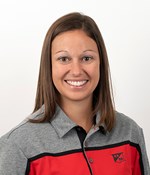Product and Agronomy Research (PAR) Results: Fungicide Use For Increased Silage Quantity & Quality
BY Dairyland Seed Agronomy Team
FUNGICIDE USE FOR INCREASED SILAGE QUANTITY & QUALITY
Description:
Concern over corn foliar diseases has increased in recent growing seasons. This is especially true when we account for concerns over tar spot. In this second-year research project we will focus on corn silage production. We will be evaluating silage yield and silage quality. To achieve this, we looked at three categories of silage hybrids. Those hybrids are as follows: one HiDF - HiDF-5000Q™, one brown mid rib - DB-5211AMXT™ and one dual purpose - DS-5279Q™. They will all be treated with Approach® Prima fungicide at the label recommended timing of VT – R2. The hybrids were planted at 33,600 seeds per acre and managed at standard agronomic levels. Each year we used four replications. Data assimilated were hand harvested silage weights, machine harvest grain yield as well as visual leaf ratings. In addition, all samples were submitted for silage quality analysis.
Results:
2021 Silage Corn Fungicide Trial
|
PRODUCT |
TONS/A |
STARCH |
NDFD |
|
TONS/A |
STARCH |
NDFD |
|
|
NO FUNGICIDE |
|
FUNGICIDE |
||||
|
BMR-3508RA™ |
25.1 |
37.7 |
58.5 |
|
24.8 |
39.0 |
60.4 |
|
HiDF-4999Q™ |
25.2 |
38.4 |
55.8 |
|
28.4 |
40.1 |
57.7 |
|
DS-5279Q™ |
31.1 |
38.4 |
56.2 |
|
30.1 |
39.0 |
56.5 |
|
Average |
27.1 |
38.2 |
56.8 |
|
27.8 |
39.4 |
58.2 |
|
PRODUCT |
GLS % |
NCLB% |
TAR SPOT% |
|
GLS % |
NCLB% |
TAR SPOT% |
|
|
NO FUNGICIDE |
|
FUNGICIDE |
||||
|
BMR-3508RA™ |
7.5 |
1.5 |
0.0 |
|
17.5 |
5.0 |
0.25 |
|
HiDF-4999Q™ |
5.0 |
0.0 |
0.5 |
|
1.0 |
0.0 |
0.25 |
|
DS-5279Q™ |
6.5 |
0.0 |
0.0 |
|
2.0 |
0.5 |
0.25 |
Wabash 2022
|
PRODUCT |
TONS/A |
STARCH |
NDFD |
|
TONS/A |
STARCH |
NDFD |
|
|
NO FUNGICIDE |
|
FUNGICIDE |
||||
|
HiDF-5000Q™ |
29.54 |
34.27 |
54.43 |
|
30.45 |
31.57 |
53.67 |
|
DS-5279Q™ |
29.54 |
37.30 |
58.07 |
|
31.85 |
36.94 |
56.80 |
|
DB-5211AMXT™ |
27.91 |
31.70 |
58.28 |
|
26.18 |
31.29 |
61.42 |
|
Average |
28.99 |
34.42 |
56.93 |
|
29.49 |
33.27 |
57.30 |
2021 and 2022 Averages
|
|
TONS/A |
STARCH |
NDFD |
|
TONS/A |
STARCH |
NDFD |
|
|
NO FUNGICIDE |
|
FUNGICIDE |
||||
|
2022 Avg |
28.99 |
34.42 |
56.93 |
|
29.49 |
33.27 |
57.30 |
|
2021 Avg |
27.12 |
38.17 |
56.82 |
|
27.77 |
39.36 |
58.23 |
|
Two years |
28.06 |
36.29 |
56.87 |
|
28.63 |
36.31 |
57.76 |
Conclusion:
Limited disease levels in both 2021 and 2022 may have reduced the impact of fungicide applications. In 2021, disease ratings were taken and are reported above. In 2022, disease ratings were taken but little to no disease was present at the late August rating date. Both years we looked for gray leaf spot, northern corn leaf blight and tar spot. In both years we have noticed that tar spot infestations increased significantly in the month of September. This, as we have come to observe, has been rather typical of this disease. In 2021, we observed increased tonnage of about 1,400 lbs (.7 ton) and in 2022, it was slightly less at 1,000 lbs (.5 ton). Starch data for the two years was mixed, with 2021 showing a slight advantage to fungicide and starch content and 2022 showing a bit of a decrease with fungicide applications. The NDFD30 numbers showed an increase for both years. However, again for 2022, the difference was not as great as in 2021. Two-year averages show a .57 ton advantage for fungicide applications and .89 increase in NDFD30. Starch numbers for the two years was negligible. Summarizing, even under little to no disease pressure we are recording an advantage to applying fungicide for corn silage production. It looks as if both years, the increased tonnage will cover the cost of fungicide application. The gain (or profit) would be in “feed hygiene” and increased NDFD30 and quality.
 |
 |
 |
 |
 |
| Brian Weller Western Region 507.456.3034 |
Dan Ritter Central Region 219.863.0583 |
Branden Furseth Northern Region 608.513.4265 |
Mark Gibson Eastern Region 260.330.8968 |
Amanda Goffnett Eastern Region 989.400.3793 |
Enjoying our Agronomy Updates? Suggestions for topics you'd like us to weigh in on? Drop us an email at dairylandseed@dairylandseed.com. We'd love to hear from you!
